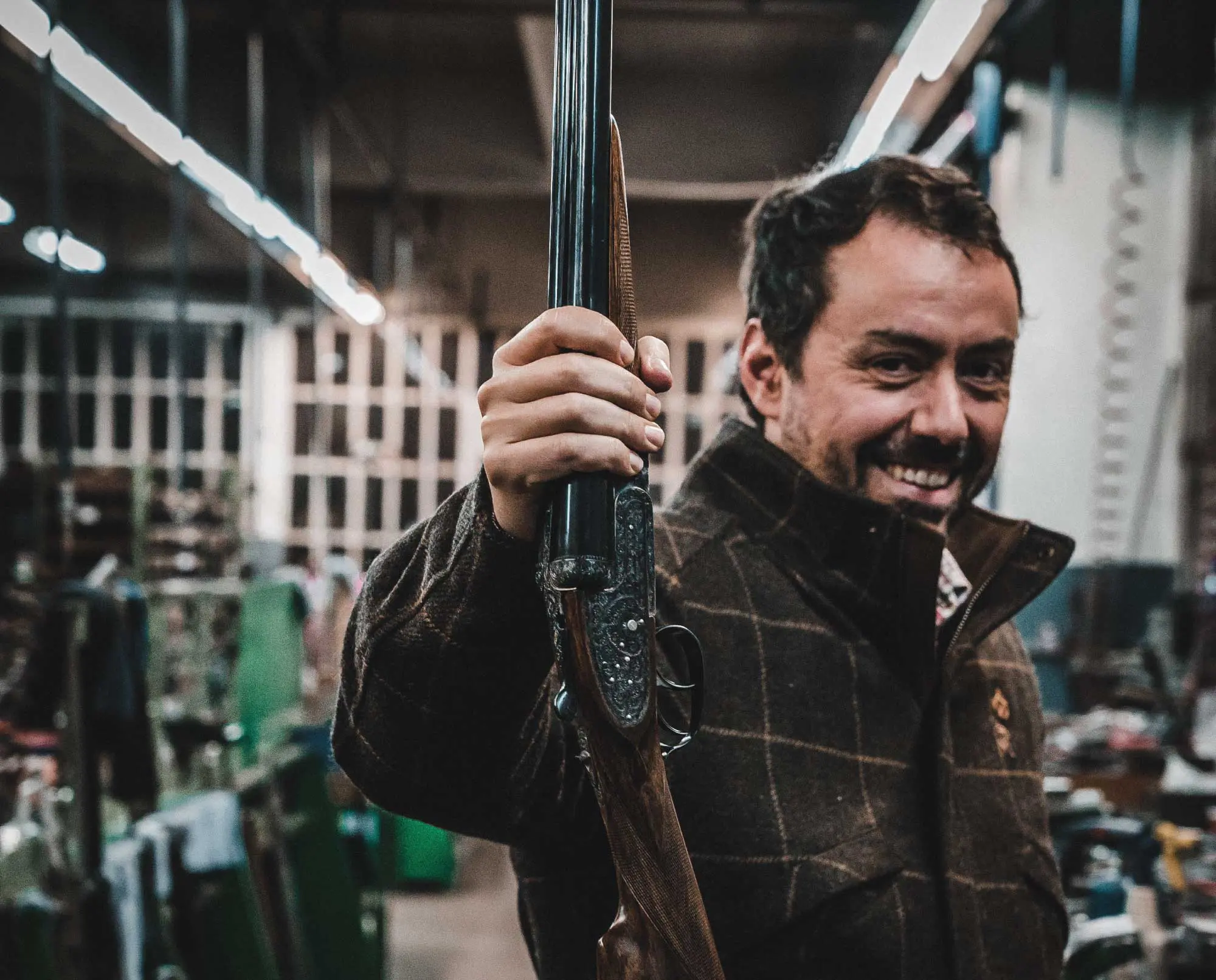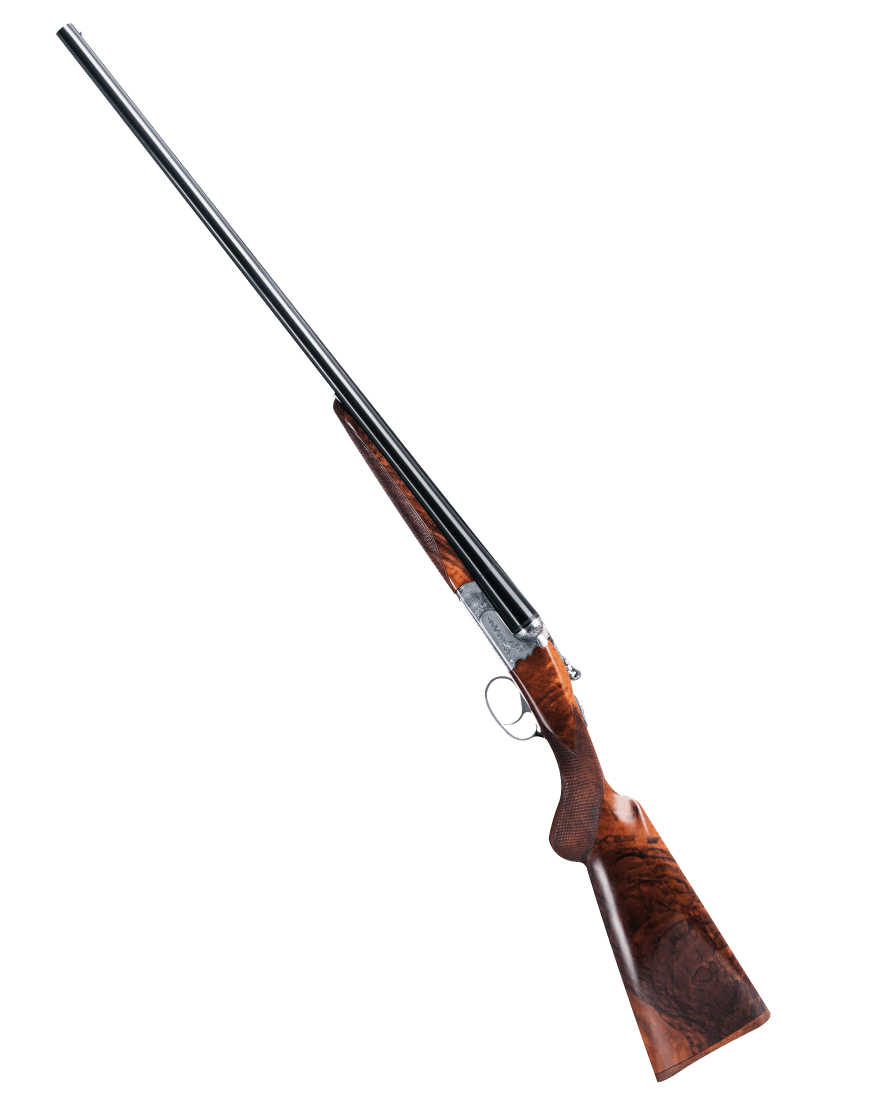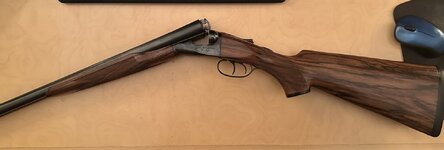oh jeeze, this was my addiction for a couple decades. I love classic American doubles, they have lots of reasons to stay away but imo very little out there is as "cool" as hunting with a gun made over 100 years ago in the USA when parts were hand fitted, etc. In no particular order, my thoughts.
The stocks are pretty much 100% going to be too short and have too much drop, unless you are a really little guy. This is THE major issue I see. I'm 6'3" and have a +2" ape index so original stocks on a classic double is a 100% total no-go for me--I learned gun fitting and to stock guns in order to be able to use some of these...it's no biggie to OWN a good double for 2-3k, but to really shoot one you could be looking at a restock, which will likely cost you close to that much before you even buy the gun. Some you can bend the stock to fit OK, but many cannot be bent enough, and length may be an issue for you. So, get your fit solid before you really start shopping. And, if you can buy someone else's project por a modern repro/refurb like the del greco above, you may be in a little bit more but it'll be cheaper than if you paid to have that work done...the only problem being that you kind of lose a lot of the allure of having a 100-yuear-old gun if it looks spanking new. Or, an older british or european double might be a more shootable choice and arguably a "better" gun strictly objectively speaking.
Super common things to look out for:
1) Barrel solder coming apart, often from a hack smith trying to reblue using modern methods. The barrrels and ribs were assembled using soft solder that melts at lower than the temp used in many modern bluing methods. This, as well as age and use, can cause the solder to separate. Often this is invisible. If you hang the barrels by the lug from 1 finger and tap a pencil or something like that along their length you can usually hear a section that doesnt ring the same if there is a section of bad solder. This is usually not catastrophic, but a rib relay and reblue will run you close to $1000 or more so it's something you want to be aware of ahead of time.
2) off face/loose action--if the gun has been used a lot the hook on the barrel lug and the hinge pin will have worn a bit and it wont lock up as tightly. Take the foreend off and hold the grip and barrels with a hand each, and give it a little wiggle--if you can feel some wiggle between the barrels and action it could need some repair. A little is likely OK if not ideal, but a major wiggle can indicate the gun is loose enough to be a problem. Again, it's repairable, but costly, either requiring adding material to the hook and re-fitting it to the hinge, or a new hinge-pin altogether. Many of these guns will also have the top lever left of center when closed, which indicates wear of the locking lug(s). Not a deal breaker, but something to indicate how much use its had and how much life may be left before significant repairs are needed.
3) cracked stocks--none of these guns use a through-bolt the way most modern guns do. If you look from the top, the actions are virtually all wedge-shaped, ie the part inside the wood is wider at the front of the gun and tapers as it extends into the stock toward the butt. If 100 years of lubricating and cleaning oils have leaked from the action into the wood during storage, the recoil-bearing surface can soften, allowing recoil to compress the wood in that area...which allows the action itself to be driven deeper and deeper into the stock with every shot. This will eventually result in a split in the wood from the end of the rear tang, back toward the butt. Again, this is easily repairable, but gets expensive when all this stuff adds up.
Each make of gun also has their own issues particular to that design. You kind of have to be a student of each design to have a feel for everything, but it can be a good idea to read up on each design and get a sense of what to look out for before diving in too deep, or to be willing to pay top dollar and buy from a really reputable dealer that will be honest up front.
Personally, I think the old graded damascus Lefever doubles are coolest, but among the hardest to shoot due to crazy stock dimensions, the hardest to work on, hard to find good ones and you
pay when you do. I've never owned one for all of those reasons, but those are smoking cool. I have nightmares about inletting the tangs on those actions too.
Parkers are my next favorite. Trojans are nothing special and kind of mehh, but any nice graded parker in good condition is sort of a marvel to me. The actions are over complicated to get around some other patents, and there are a lot of variations of models and grades and barrels, etc. Some of the older damascus barreled mid-grades are my favorite (PH, etc). Some of the parkers seem to have more variation in quality even in the same grades, than other guns of the era, so look at a bunch before you spring for one or you might find yourself with one of the ones where the engraved birds look more like flying turnips. There is a lot of info on parkers and a good collectors website and forum, so pretty easy to get info about these and plenty of smiths who are well versed in working on them. parkers were available in different frame weights as well, so collectors like the rarer gauge/frame/barrel configurations. A parker VH can be found with relatively modern dimensions--I know nothing about this gun, but its fairly modern stock that could be made a little longer with a nice pad if you could find someone who would do a good job dealing with the widows peak.
https://robinhollow.com/guns-for-sa...tguns/parker-vh-12-gauge.cfm?gun_id=102526061
Foxes are also very cool, I personally think they have great lines, and a few of the common configurations are great lightweight guns that get you into a cool old American double for not a ton of $. A nice 1920's AE 16ga with lightweight barrels is a treat, but unlike a parker the lowest "ungraded" model the sterlingworth was exactly the same action as the graded ones, just with less engraving and a snap-on forend instead of a latch. On all of these, the subguages often had 26" barrels from the factory. Most--but not all--foxes and parkers you can look up the original gun configuration by serial # (ie serial 167... was a 12ga Sterlingworth made in 1913 with 30" #1 weight barrels choked modified and full, shipped to XX hardware store in milwaukee, wi" or something like that). This can help to make sure if things are original if you are paying anything for a collectible gun. Fox also has a good collectors website and info available. 16ga foxes are really easy to find and are nice becasue its a small, light frame the same-ish as their 20ga frame, but with a slightly bigger shell to accomodate some bismuth shot for you californians. Foxes had 4 barrel weights (1-4, with 1 being heaviest, 4 being lightest) so you can often tell what the handling of the gun is going to be like if you can determine what barrels it has--some are marked, some arent. I think foxes are justifiably popular, although a lot of people feel they are pretty pedestrian as older american guns go--perhaps true, and some of the allure is certainly becasue its a very simple action that is easy to work on and customize.
LC Smiths are classics for sure, but aesthetically they leave me kind of cold until you get into the higher-grade big-money guns. Some of the rem 1894's are really cool too, although not nearly as common as some of the others.
With any of these guns if you find a good condition one, the price is determined in large part by its collectors value. Fox made a bajillion a-grade 12 gauges with 28 and 30' barrels, so they are sort of a dime a dozen and prices will be lower--a LOT lower--than a truly oddball configuration. There are a few Foxes that were special ordered with very specific instructions that I've seen letters for, that would bring a premium, including ex ceptionally long barrels, stocks with longer and more modern dimensions, extra fancy wood, etc. I dont remember exactly the details, but I heard of a graded ejector 20ga fox with the lightest-weight barrels in 32" with pretty modern stock dimensions--a gun like that would be 10x the price of a standard 20ga with 26 or 28' barrels even though the gun grade was the same and condition might be the same. You will likely get the most bang for your buck from a fox or parker low-grade gun with extractors, not ejectors--that means a fox A grade or a parker VH. An AE or a VHE will be a little more, but also good options.
If you arent particular about make, some of the 20th century british "second-best" doubles might be a solid bet. You are likely looking at 3-4k rather than 2-3, but you can get a heck of a lot of gun for that money...buying similar quality now in a new gun is upwards of 15-20k or even more. Check out Hill Road and Gun for some good opotions here. Looks like it hasnt been updated in a couple months, but something like the 16ga william evans or the Midland a few down from the top...
Affordable, Fine, vintage English shotguns
www.hillrodandgun.com



